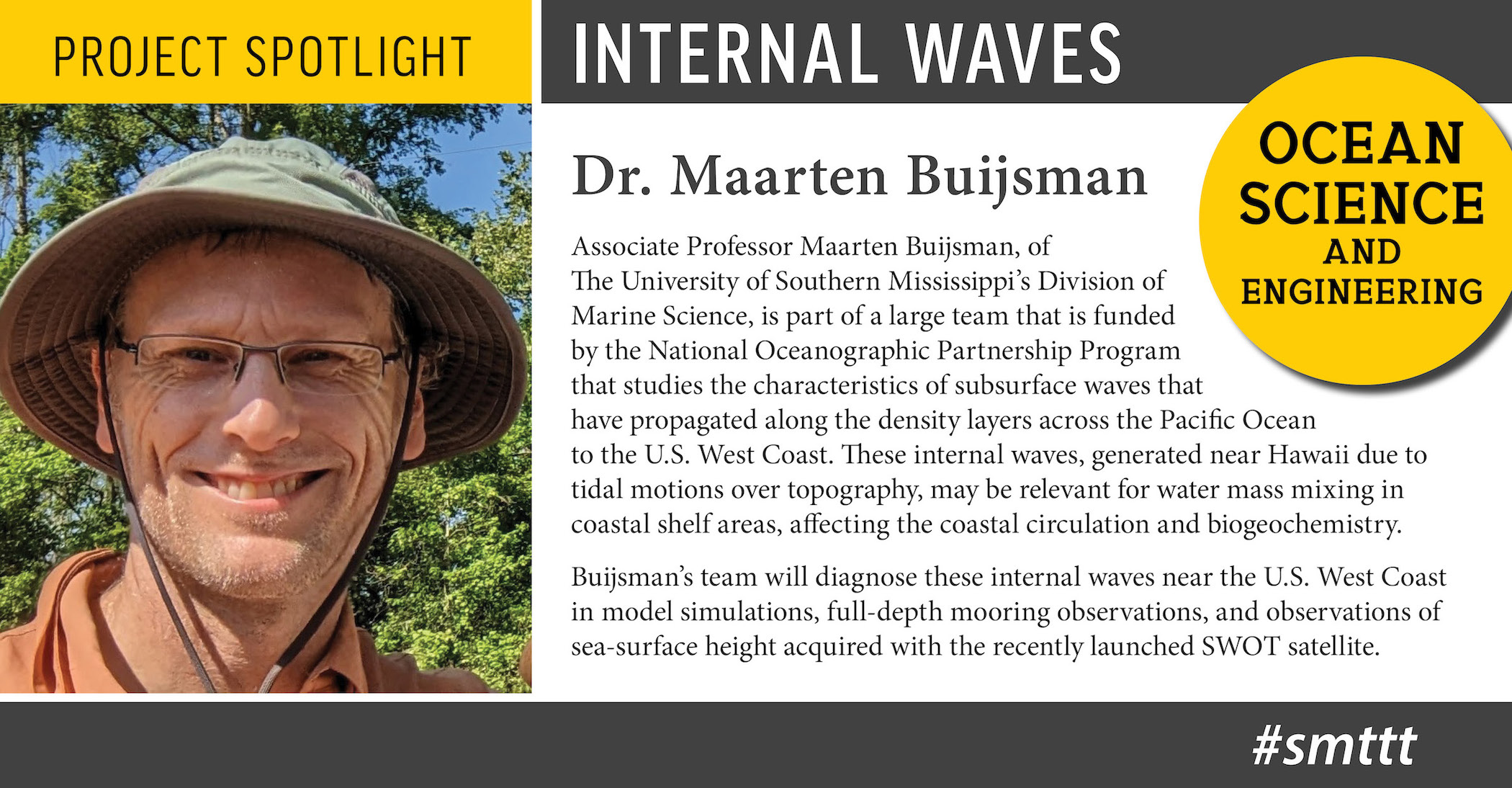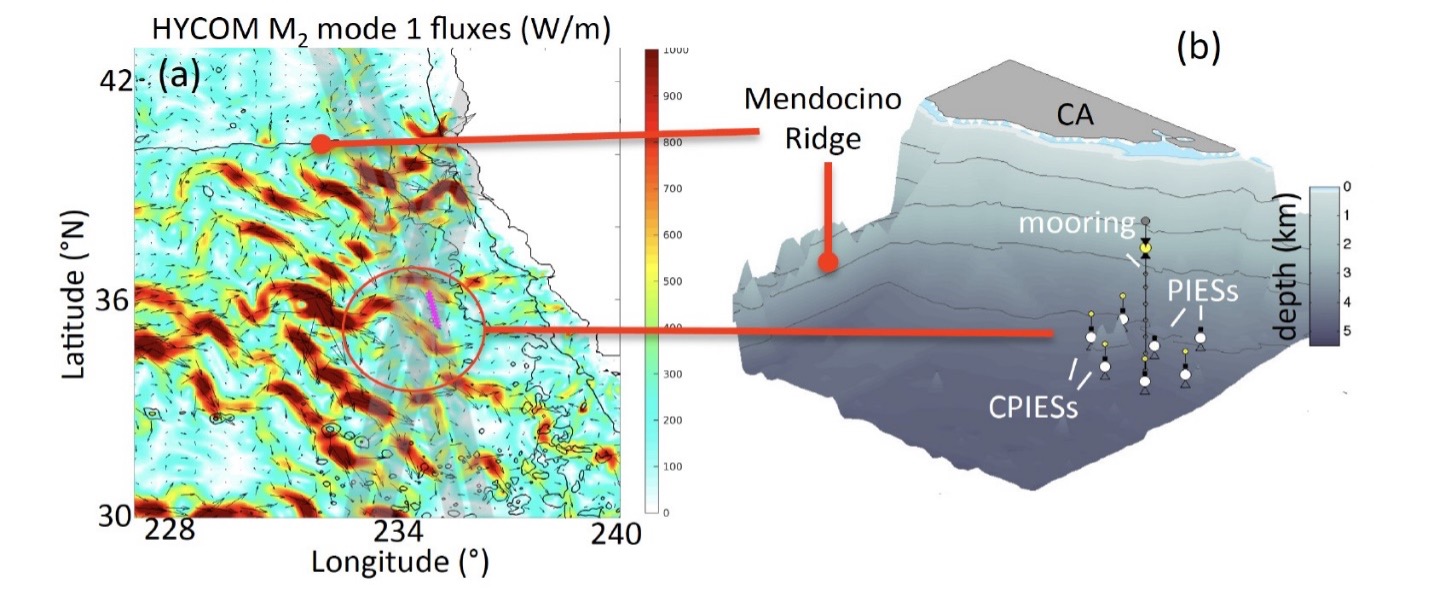School of Ocean Science and Engineering
Research Spotlight: Maarten Buijsman
Page Content

Remotely Generated Internal Waves
in Observations and Global Ocean Simulations
A large team of scientists from USM, the University of Michigan (U-M), the Naval Research Laboratory (NRL), Woods Hole Oceanographic Institution (WHOI), Scripps Institution of Oceanography (SIO), and the Jet Propulsion Laboratory (JPL) are working on a three-year National Oceanographic Partnership Program (NOPP) project to:
1) diagnose and validate the time and spatial variability of remotely generated internal waves in global ocean model simulations and;
2) deploy an Internal Wave Resolving (IWR) Array to measure these remotely generated internal waves.
Associate Professor Maarten Buijsman is the lead of the USM team, which also comprises postdoc Dheeraj Varma and graduate student Mujeeb Abdulfatai.
Internal waves are vertical disturbances in the ocean’s density layers with amplitudes
of 10-100 meters and wavelengths of 10-100 kilometers. They are generated by the wind
and when the tides move over underwater ridges. For example, the tidal internal waves
generated near Hawaii propagate 1000s of km to arrive at the US West Coast (subplot
(a) in the figure). The generation, propagation, and dissipation of internal waves
is relevant for predicting coastal processes in regional simulations, the de-tiding
of satellite altimetry measurements of sea-surface height, ocean acoustics, and water-mass
mixing, which impacts ocean circulation and ultimately the Earth’s climate.
While near-field internal waves are reasonably well measured and simulated, our knowledge
of far-field internal waves is lacking. In this project, an IWR Array will be deployed
off the US West Coast by the SIO/WHOI/JPL team in September 2023 coinciding with the
swaths of the fast sampling and science orbit phases of the Surface Water and Ocean
Topography (SWOT) mission (see figure). The IWR Array and SWOT data will be used to validate global
ocean simulations by the USM/U-M/NRL team and improve our understanding of internal
wave processes.

Energy flux and bathymetry near the proposed IWR Array site south of the Mendocino Ridge offshore of the California continental slope.
(a) Semi-diurnal (M2) mode-1 energy flux (W/m) as estimated from a numerical model (courtesy of M. Buijsman) with the planned NASA SWOT Cal/Val sites noted (pink x’s).
(b) Schematic of our proposed IWR Array at the base of the continental slope south of the ridge with a full-depth hybrid mooring and 7 C/PIESs (courtesy of M. Andres of WHOI).

